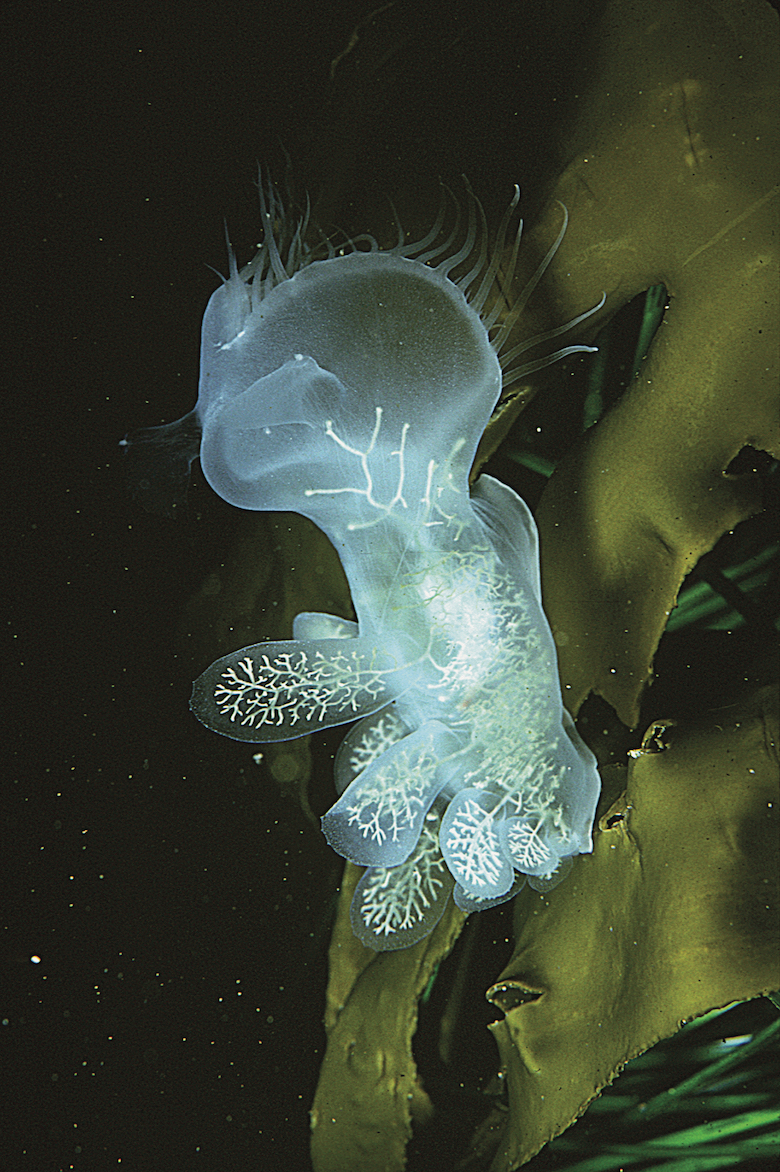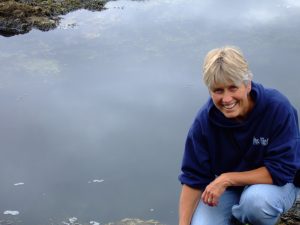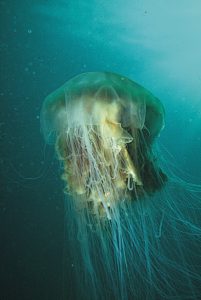#282 Creatures as teachers
Pacific Reef and Shore: A Photo Guide to Northwest Marine Life from Alaska to Northern California (Revised Second Edition) (First published by Harbour in 2003 as Pacific Reef and Shore: A Photo Guide to Northwest Marine Life)
by Rick Harbo
Madeira Park: Harbour Publishing, 2017
$12.95 / 9781550177862
Reviewed by Cathy Carolsfeld
First published April 6, 2018
*
 Whether you are visiting British Columbia or have lived here all your life, it is virtually impossible not to be drawn to the beauty and diversity of marine life along the extensive shoreline of the Pacific coast.
Whether you are visiting British Columbia or have lived here all your life, it is virtually impossible not to be drawn to the beauty and diversity of marine life along the extensive shoreline of the Pacific coast.
And if you like to get up close and personal with the many weird and wonderful species that you might encounter along the way, whether you are walking, driving, paddling, snorkelling, or diving your way along the West Coast, you would do well to have a copy of Rick Harbo’s field guide, Pacific Reef and Shore at hand.
This travel-sized and naturalist-resistant resource book includes photos and descriptions of hundreds of the most common animals and plants that call the exposed north Pacific Ocean and adjacent protected inland waters their home — everything from jellyfish to grey whales, from sea lettuce to surf grass.
More than a popular seaside companion, Rick Harbo’s comprehensive book, notably subtitled Photo Guide to Northwest Marine Life, will satisfy the curiosity of aspiring naturalists and more serious scientists alike. This will come as no surprise to those who have met Harbo. His passion for learning about all things marine has been a part of his work and personal life for the past 45 years.
After retiring from almost four decades as a biologist with Fisheries and Oceans Canada at the Pacific Biological Station in Nanaimo, Harbo has continued to share his expertise and enthusiasm as a volunteer research associate in invertebrate zoology at the Royal B.C. Museum.
Throughout all those decades of work and play, Rick Harbo has surrounded himself with like-minded friends, colleagues, and experts in a wide range of marine sciences, many of whom have graciously provided advice and scientific editing for this revised second edition.

What does Harbo do with his spare time, you might ask? You’ll find him ambling the shoreline and diving into west coast waters, always adding to his wealth of knowledge about local plants and animals.
All this means that the science in this book is well vetted, up-to-date, and based on years of research and enthusiastic hands-on experience. That only a handful of the hundreds of photos in the book are not Harbo’s reflects his deep knowledge of an extensive subject.
It is virtually impossible to include every species in a practical field guide covering the wide range of common species you are likely to encounter, but Harbo strikes the right balance. His depth of knowledge makes Pacific Reef and Shore not only an ideal guide for British Columbia but the perfect travel companion for anyone living on or visiting the coasts of Alaska, Washington, Oregon, and California.

Although subtidal species seem to be proportionately better represented in Pacific Reef and Shore, this might have been intentional. After all, there are other single page, accordion-style, laminated field guides that do justice to the many common intertidal species on our shores — including other guides authored by Harbo – that can easily be included in your field kit without adding too much bulk or weight.
Still, Pacific Reef and Shore is one of the few field guides featuring common subtidal species that is also compact and water-resistant enough to accompany any dive expedition. As someone involved in marine ecosystems education, my advice is to leaf through the guide immediately after a dive to jog your memory of what you saw – but don’t forget to commit your observations to a dive log right away. Once you get home to your more comprehensive library, it might well be too late to remember the details!
My only (minor) reservation with Harbo’s guide is that there are places where a few well-placed words might have helped clarify the content of photographs, increase readers’ understanding of some of the less recognized species, or enhance public awareness.

One example that comes to mind is the section on sea squirts and moss animals. These are relegated to a back row seat for “other small marine animals,” while more popular groups like the nudibranchs take front and centre stage. Although this is often a common strategy in seashore field guides, my challenge to Harbo and others writers is, somehow, to bring more attention and understanding to the lesser-known but intriguing and important groups.
When I first moved to B.C. in 1980, and started diving and exploring the intertidal zone, Harbo’s earlier morph of this book – Tidepool and Reef: Marinelife Guide to the Pacific Northwest Coast (Hancock House, 1980) — was one of my constant field companions and often my first line of inquiry in identifying the many “new to me” species I encountered as I learned the local flora and fauna.
This is a reminder that Harbo was ahead of his time, a pioneer in the move to provide user-friendly and scientifically accurate guides to local marine sea life.

Now, after almost forty years of being involved in marine education and community research initiatives, I continue to use and recommend Pacific Reef and Shore as a first-class field companion to teachers, public school students, community educators, and youth volunteers involved in B.C. marine education programs.
I have even recommended this guide to random people I’ve met on the shore who seem to have caught the “I-want-to-know-more!” bug.
And if you spend time on our coast and don’t already own a copy, I strongly recommend that you add this latest edition of Rick Harbo’s Pacific Reef and Shore to your reference library of handy marine field guides for the coast of British Columbia and adjacent shores.
*

Catherine Carolsfeld (née Pennachetti) grew up in a small town in Ontario’s Niagara Peninsula. Since then, she has lived, dived, studied, researched and taught biology from coast to coast to coast in Canada and other parts of the world. From the start, Cathy’s research interests were piqued by marine invertebrates. She came to appreciate the power of “creatures as teachers” through her B.Sc., Honours and M.Sc. degrees at Memorial University of Newfoundland and the University of Victoria. Her combination of academic and practical knowledge about local and global marine environments, firm belief in the power of partnerships, and her love of teaching is the backbone of her work. Over the past forty years, Cathy has run WestWind SeaLab Supplies, Canada’s longest-lived supplier of living marine organisms for teaching and research. She also co-founded the Seaquaria in Schools program, which now serves 24,000 B.C. public school students a year. Cathy continues to be committed to ensuring that students of all ages can experience the magic of marine ecosystems and creatures as teachers.
*

The Ormsby Review. More Books. More Reviews. More Often.
Reviews Editor: Richard Mackie
Reviews Publisher: Alan Twigg
The Ormsby Review is a journal service for serious coverage of B.C. books and authors, hosted by Simon Fraser University. The Advisory Board consists of Jean Barman, Robin Fisher, Cole Harris, Wade Davis, Hugh Johnston, Patricia Roy, David Stouck, and Graeme Wynn. Scholarly Patron: SFU Graduate Liberal Studies. Honorary Patron: Yosef Wosk.
“Only connect.” – E.M. Forster